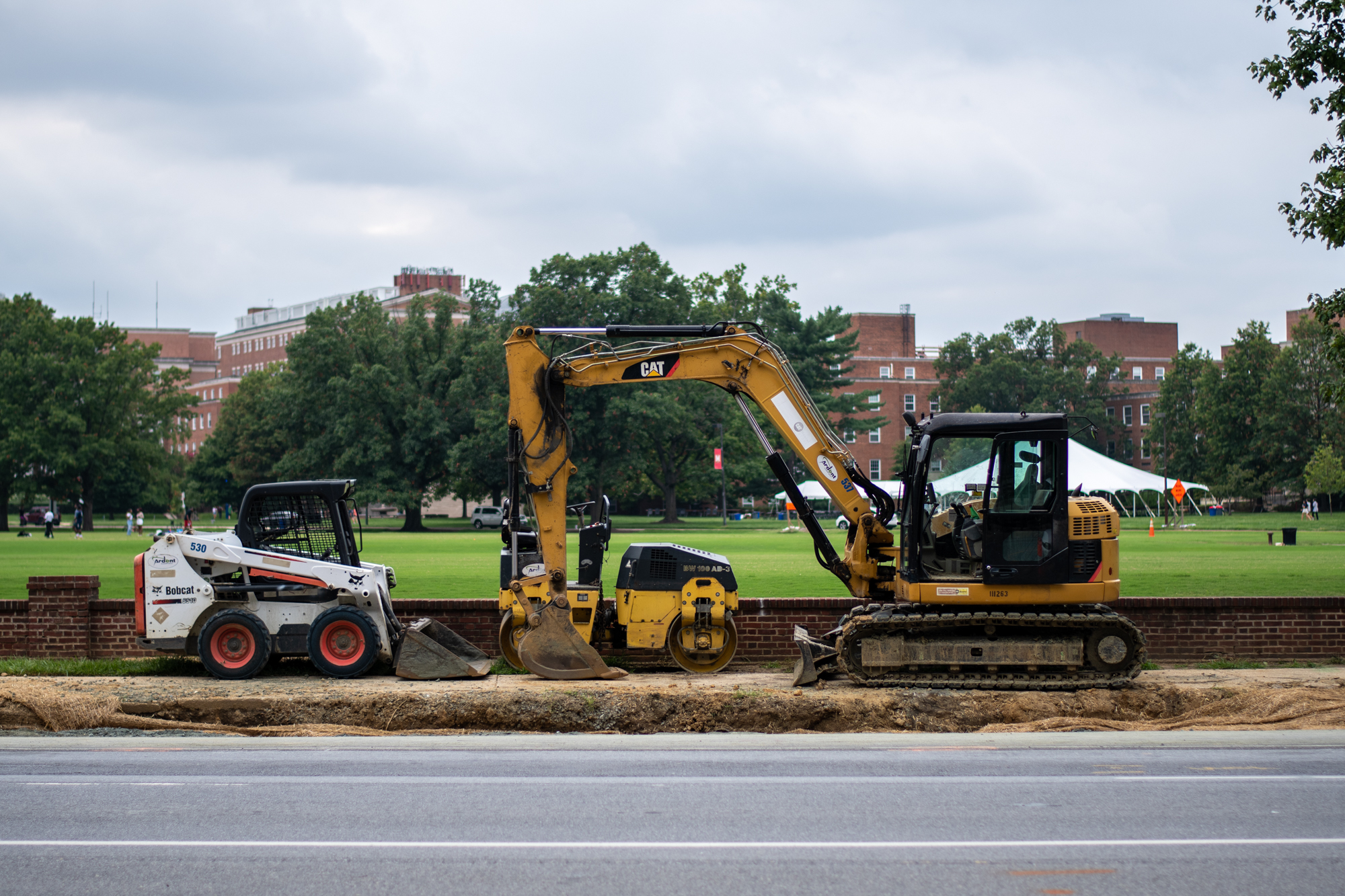University of Maryland leaders, Maryland Department of Transportation representatives and local officials celebrated completing the first part of a nearly $57 million project to improve safety on Route 1 on Saturday.
The U.S. 1 College Park Improvement Project, which began in spring 2020, will enhance pedestrian and bicycle safety along the 1.5-mile stretch between College Avenue and University Boulevard, according to a State Highway Administration news release.
Saturday’s celebratory event at Fraternity Row Field included a ribbon cutting, a procession from this university’s marching band and speeches from local leaders.
University president Darryll Pines said in his speech that the project is about safety as well as “reimagining the boulevard.”
“These upgrades have truly transformed one of the primary gateways into the University of Maryland,” Pines said.
[UMD DOTS implements required micromobility training, lower speed limit]
During construction, the State Highway Administration widened Route 1, added five-foot bicycle lanes, raised medians and ensured sidewalks complied with the Americans with Disabilities Act, according to the Maryland Department of Transportation.
The project also included upgraded lighting, road resurfacing, new pavement markings, improved signage and stormwater and drainage facility enhancements, according to Will Pines, Maryland’s state highway administrator.
The project will enhance public safety and help reduce pedestrian fatalities on Route 1, Prince George’s County Council member Eric Olson said in his speech.
Prior to the project’s completion, Olson said the road was “dangerous” and “encouraged speeding.”
Berwyn resident Kendra McAbee, who is also the communications coordinator for the College Park City-University Partnership, said the new improvements make her feel safer when she bikes or walks to work.
[College Park installs new pedestrian, bike safety measures on Knox and Hartwick Roads]
The next phases of the project will extend the safety improvements to Hollywood Boulevard, and ultimately up to just north of Interstate 495, according to Will Pines.
These phases are awaiting funding, but the State Highway Administration has already completed planning studies in preparation, he said.
McAbee said that the next phases will connect neighborhoods to this university and downtown College Park in “multimodal ways.”
“People won’t have to just use a car or a bus to get to where they need to go, and I think that’s transformative,” she said.
The project also aligns with College Park’s broader economic goals, College Park Mayor Fazlul Kabir told The Diamondback.
“When the main streets of the city — any town — is improved and nice and beautiful and safe, you attract more people to come in and do business,” Kabir said.
Will Pines said the State Highway Administration is continuously working to further improve safety and traffic flow throughout the state’s roadways.
“We’re going to keep going,” he said. “We are committed to safety across our system, and projects just like this one are a primary example of how we’re going to honor that commitment.”



